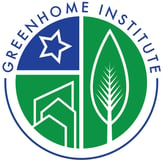Free Heat: Heating and cooling buildings entirely with ambient energy
GreenHome Institute Weekly Free CE Webinar Presents:
Event
Free Heat: Heating and cooling buildings entirely with ambient energy - Free CE Webinar
Wednesday, December 4 @ 12 PM EST
Details to view the event are private and will be sent along with your ticket purchase.

